Bobó de Camarão – Brazilian Shrimp Stew
Bobó de Camarão is an iconic Brazilian Shrimp Stew recipe that features shrimp, palm oil, coconut milk and yuca root. This colorful dish has delicate flavor and texture, thanks to the combination of yuca and coconut milk. It’s an easy, yet impressive one-pot recipe meant for serving over rice and sharing with loved ones. Your familia is going to love it!
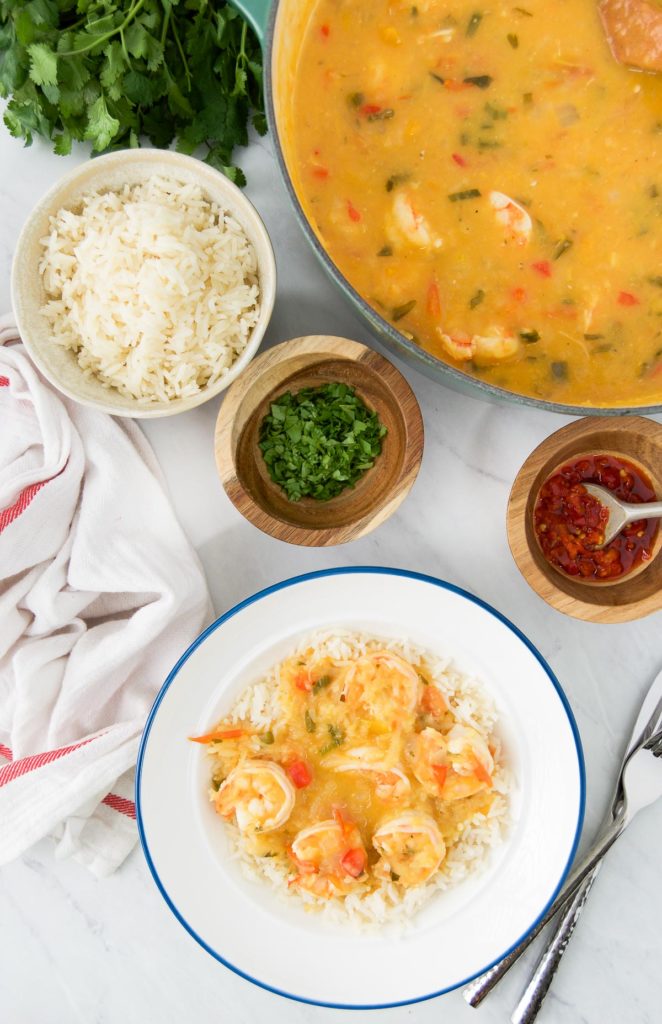
This Afro-Brazilian recipe is also full of history, so, this year, I’m taking it to Eat the Culture’s Black History Month Virtual Potluck. I’m proud to collaborate with more than 30 Black recipe developers as we celebrate Black History Month 2022. This Virtual Potluck explores Black food through the lens of Afrofuturism. Our collaboration of recipes explores the intersection of the Black diaspora via culture, future, geopolitics, imagination, liberation, and technology.
Check out the list of participating recipes at the bottom of this post, and of course, cook and share them, too! Follow each participant and continue the discussion with us on social media using the hashtag #BHMVP2022!
Bahia – Brazil’s Culinary Treasure
Bobó de Camarão is a Brazilian Shrimp Stew from the northeastern Brazilian state of Bahia, a region rich in history, flavors and beauty.
Bahia is at the center of Brazil’s culinary scene and is home to our most popular and iconic dishes like moquecas, vatapás, this bobó de camarão and many others. It’s a real culinary treasure!
Bahia is known as Brazil’s most African state because of its strong cultural influence that truly defines local cuisine and lifestyle. This state housed Brazil’s first capital city, Salvador, and is the region where Brazilian slavery brought African influence to, at the time, a prevailing Portuguese culture. This, mixed with the native indigenous influence, created the trifecta of influences that is Brazilian culture today.
The Northeast, Nordeste as we say in Portuguese, is also the region of Brazil’s most traditional ingredients and tastes, like coconut, sugar cane, hot peppers, an abundance of seafood, and of course, cachaça.
African dishes being recreated in Brazil by substituting these local ingredients have, over time, become Brazilian at heart.
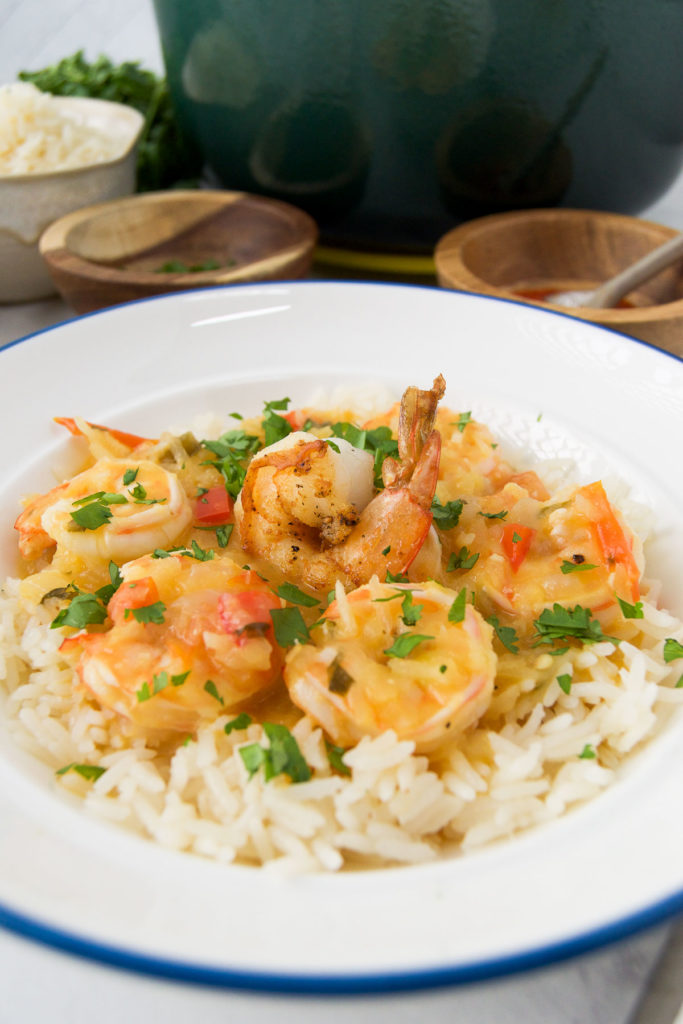
Bobó de Camarão – An Iconic Brazilian Dish
Bobó de Camarão is a classic example of the use of local ingredients to recreate African dishes on Brazilian soil.
Starchy porridge-like mashes, being a major component of the African diet, took advantage of okra, bananas, yuca, and yuca flour as thickeners in Afro-Brazilian cooking.
In a classic Brazilian Shrimp Stew recipe, we have dendê palm oil, a west African ingredient, mixed with Brazilian chili peppers and coconut milk—a signature combination of the Bahia region—and yuca, a native ingredient, as a thickener.
The marriage of those ingredients is just incredibly delicious. The mash has a sweetness, thanks to the bell peppers, coconut milk and shrimp. But a bobó isn’t really a bobó without hot peppers. That hint of heat gives this dish a kick to let you know what Bahia is all about.
In a traditional bobó, the yuca is cooked on the side and is either mashed or blended with an immersion blender. Then, it is added to the pot where the other ingredients have been cooking.
To make it a little easier, I shred the raw yuca and let all the ingredients cook in one pot. This is the only change I’ve made to my family’s recipe. All the ingredients and remaining methods are essentially the same.
Like many Brazilian dishes, a good Bobó de Camarão is meant to be shared. It just says family meal all over it!
It’s pure Brazilian comfort food!
I hope you try and fall in love with this recipe!
Beijinhos xoxo (or… um cheiro! to keep it Baiano!)
Ingredients
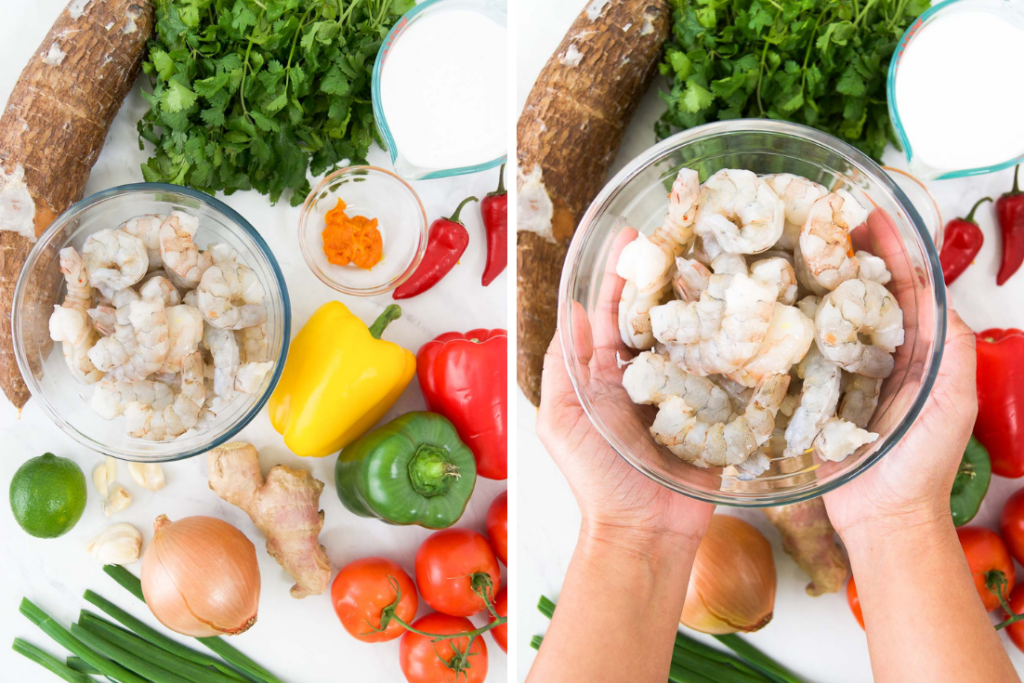
Brazilian Kitchen Abroad is a participant in the Amazon Services LLC Associates Program, an affiliate advertising program designed to provide a means for us to earn fees by linking to Amazon.com and affiliated sites.
- Yuca Root—this is a main ingredient. Therefore, there’s no substitute. But don’t fret! Yuca is fairly easy to find in big cities grocery stores or in Latin Markets.
- Palm Oil—this is another main ingredient, known in Portuguese as Azeite de Dendê. In big cities, it can be found in healthy stores like Whole Foods, Central Market, etc. or in Brazilian markets, African markets, Latin markets, Asian markets or online, like this one. This ingredient offers beautiful color to the dish, but please be careful not to exceed the amount the recipe calls for. Too much can cause indigestion. If you really can’t find it, you may replace it with coconut oil, but please note, your dish will have a lot less color.
- Large Shrimp—whether it’s pink, white, etc. Here in Texas, I get Gulf shrimp, but get what you can—just make sure it’s deveined and peeled. If you’re buying frozen, note that thawed shrimp can weigh less. Keep that in mind and get a little extra!
- Red, Yellow and Green Bell Peppers—yes, all three!! We like colorful dishes in Brazil, and the different colors of peppers give slightly different flavors, too.
- Hot Peppers—in Brazil, we use pimenta malagueta or dedo de moça, which you can substitute for a red aji pepper. However, they are nearly impossible to find where I live, so I use fresh serrano pepper.
- Coconut Milk—the kind from the can, like this one. Do not use the one from the box.
- Cilantro—we use this in the dish and for garnish. If you’re sensitive to cilantro, you may replace it with curly leaf parsley, which is milder in flavor than flat leaf parsley.
- Lime juice—please juice your lime fresh instead of purchasing shelf-stable lime juice.
- Brazilian sofrito or garlic
- Tomatoes
- Fresh Ginger
- Onion
- Green Onion
Equipment
- Vegetable peeler
- Food processor with a shredding attachment or a box grater
- A 5.5 quart Dutch oven (or larger)
How to Make this Bobo de Camarao Recipe
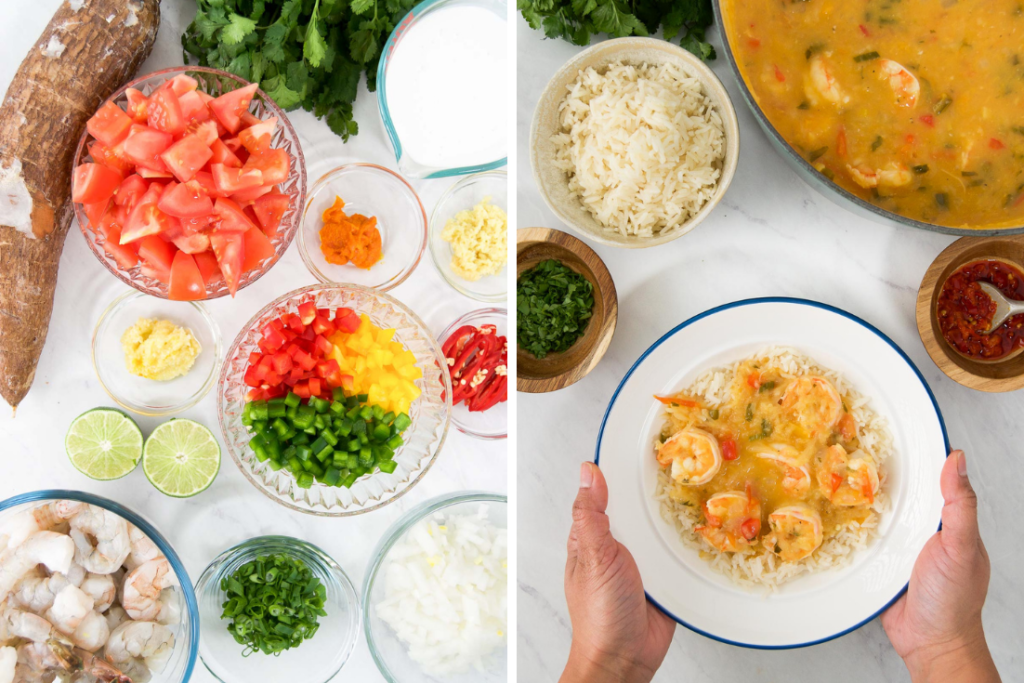
Prep the ingredients – Measure, dice, mince!
In this Brazilian Shrimp Stew recipe, I keep my dice on the small side when it comes to the onions and the bell peppers. But we can cut the tomatoes into large chunks, keeping the seeds, juices and all! It’s good moisture, plus it’ll all disintegrate into the dish.
Grate the ginger for maximum flavor, and be sure to save all that juice you get from grating it, because we want that, too!
As for the herbs, we can rough chop them—the dish cooks for a while, so there’s no need to finely mince it. Besides, we want to keep those noticeable pops of green—this is a happy dish, and color is everything! 🙂
Finally, the chili pepper… if you’re not into heat, hear me out. This dish is almost “sweet,” so having a chili component is really important for complexity and depth. Besides, it’s a major characteristic of a good bobó and Bahia cuisine in general.
That said, the dish doesn’t need to be too spicy—if you don’t usually like much heat, you can remove the seeds and cut the red pepper into larger chunks so you can try to avoid biting into them, but I want to invite you to add them in anyway!
If you love spicy, do it like me and slice the chili pepper thin and add the seeds, ribs and all. You can even double the red pepper in the recipe, or use a marvelous hot oil like this one to sprinkle on top of your bobó once plated. It’s the bomb!!
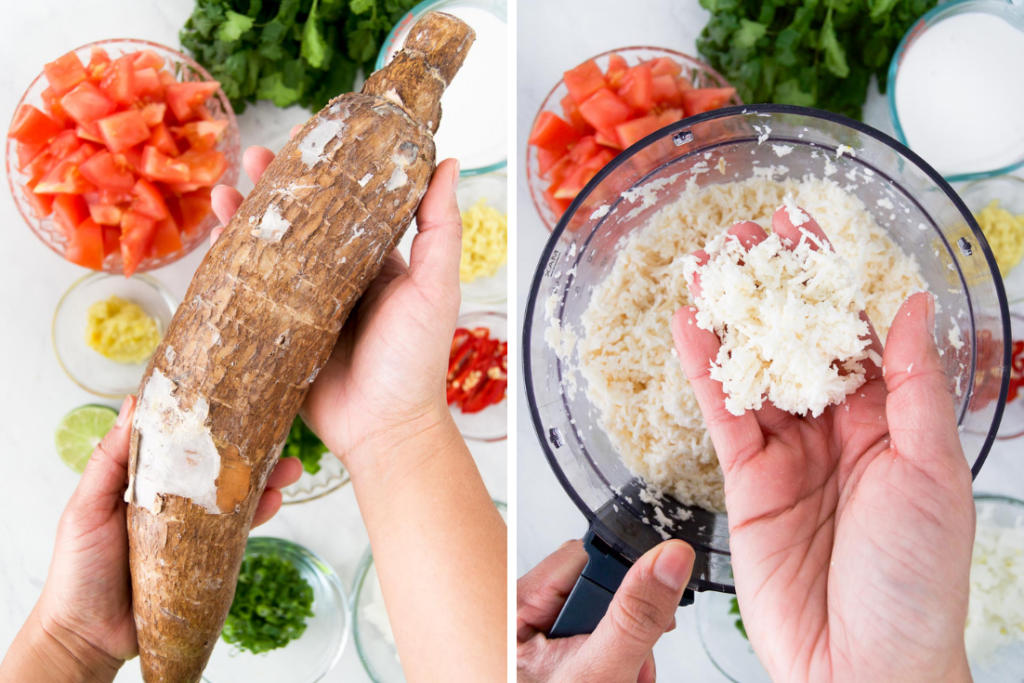
Peel and shred the yuca
If you’ve never worked with yuca, it can be intimidating… but think of it as a giant potato with thick skin. A good vegetable peeler is perfect to remove the skin, though you might have to peel a couple times to peel away all the skin and wax.
Cut the yuca into manageable chunks so you can shred it. You’ll notice there’s a rope that runs through the center. That bit is tough and needs to be removed. You can do so with a knife—check out this post for some more info on how to do that.
Then, you’re ready to shred it, either by hand with a box grater or with a food processor that has a shredder attachment, which I find much easier!
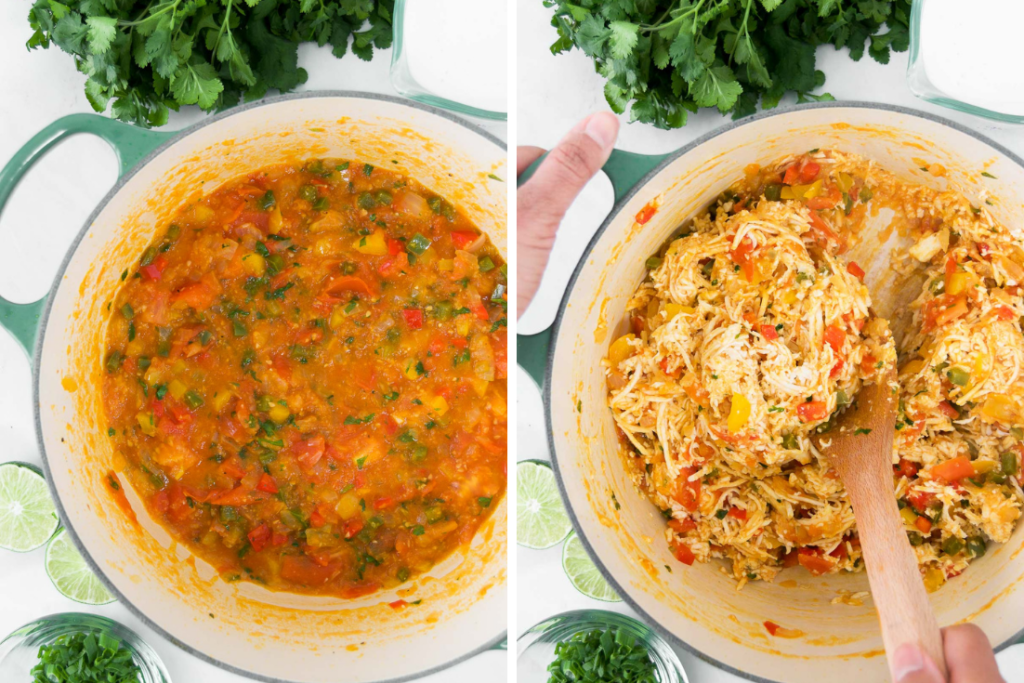
Heat up the dendê and saute away
If you’ve never worked with dendê palm oil, don’t be seduced by its bright and beautiful color. Resist the urge to drizzle too much of it into the pot, and make sure to use only as much as the recipe calls for. Too much of it can cause indigestion, especially if you’re not used to it.
Because we manage the amount of oil, we layer in the aromatics in a specific order to ensure we always have enough moisture in the pan to avoid things from burning or turning into a flavorless mush.
We start with the onion, then you can marvel at how stunning it looks when it turns orange thanks to the dendê. When the onion is soft, add the Brazilian sofrito. When that is golden and fragrant, add in the bell peppers.
Then, when the bell peppers are soft, add the tomato chunks. Season with a little salt to help pull some moisture out of them… We want them to basically melt into the pan.
You can use a wooden spoon for stirring and use it for mashing the tomatoes as they cook. It’ll look like the image above to the left.
Add the ginger and cilantro, then finally, the shredded yuca and stir to incorporate.
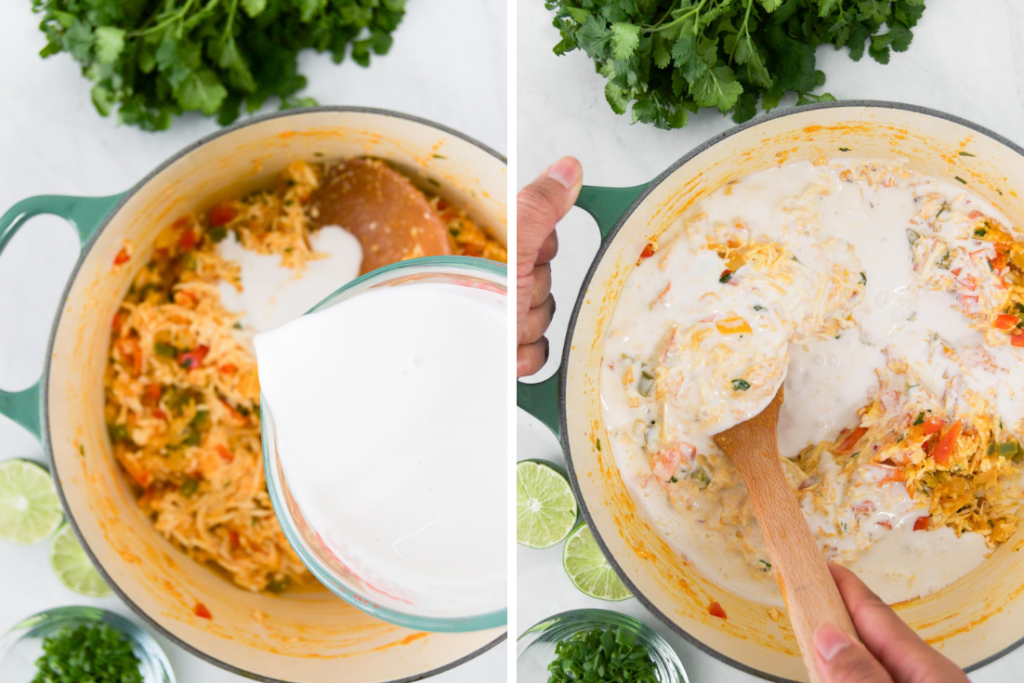
Add in the coconut milk and water, bring to a simmer with the pot covered so the yuca can cook and release all its starch and disintegrate into a delicious mash.
Don’t forget!
The yuca will take a little while to cook (about 20 to 30 minutes, depending on your stovetop). Don’t be tempted to turn up the heat to speed the process. Keep it on low heat, stirring occasionally because as the yuca absorbs moisture, it will stick to the bottom of the pan and can burn.
As that happens, add in a little more water, or some shrimp stock to keep some moisture in there. But, a little goes a long way! Trust the process.
Halfway through the cook, add the chili pepper and green onions to the Brazilian Shrimp Stew. Season with salt and pepper, and give it a taste.
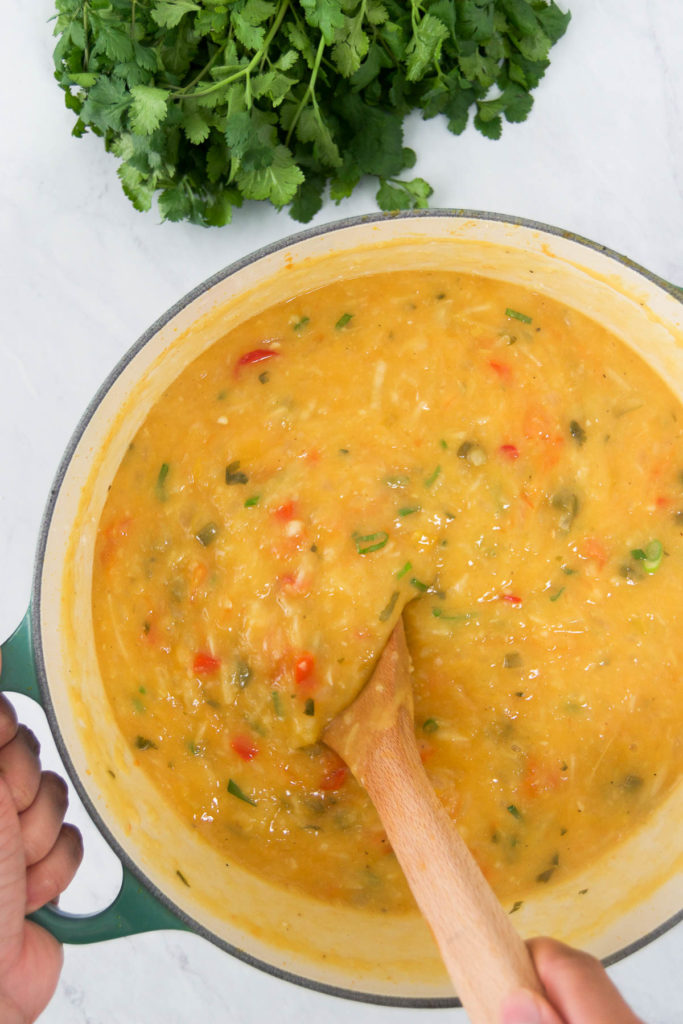
Another thing to note is, this Brazilian Shrimp Stew has a loose mash/porridge-like consistency, as you can see in the image above.
The shredded yuca will soften up and mostly disintegrate into the dish, but it is OK to get a few bites of textured yuca that are still holding their stringy shape.
When the yuca is cooked, and you have a beautiful loose mash, it’s time to get the shrimp ready to add to the dish!
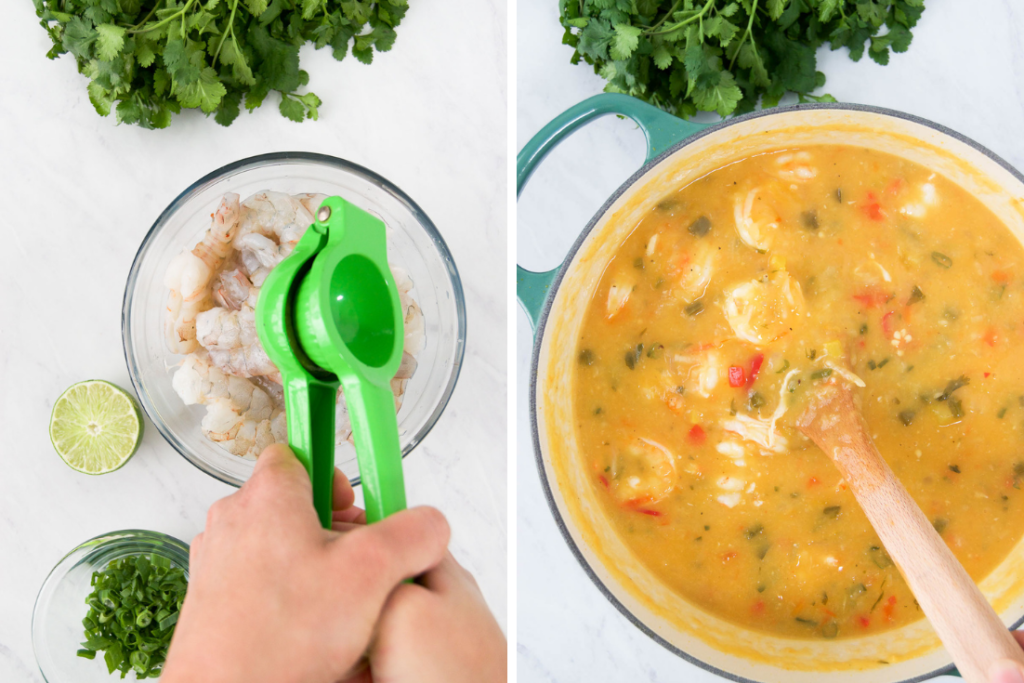
Just squeeze the lime juice on top of the shrimp, give it a stir, and after a few minutes, add it to the yuca mash mixture.
The raw shrimp will gently cook in the mixture for no more that 15 minutes.
There’s no need to cook much longer than that because we want the shrimp to stay plump. If we cook it too long, it gets chewy, and you don’t deserve that, meus amigos.
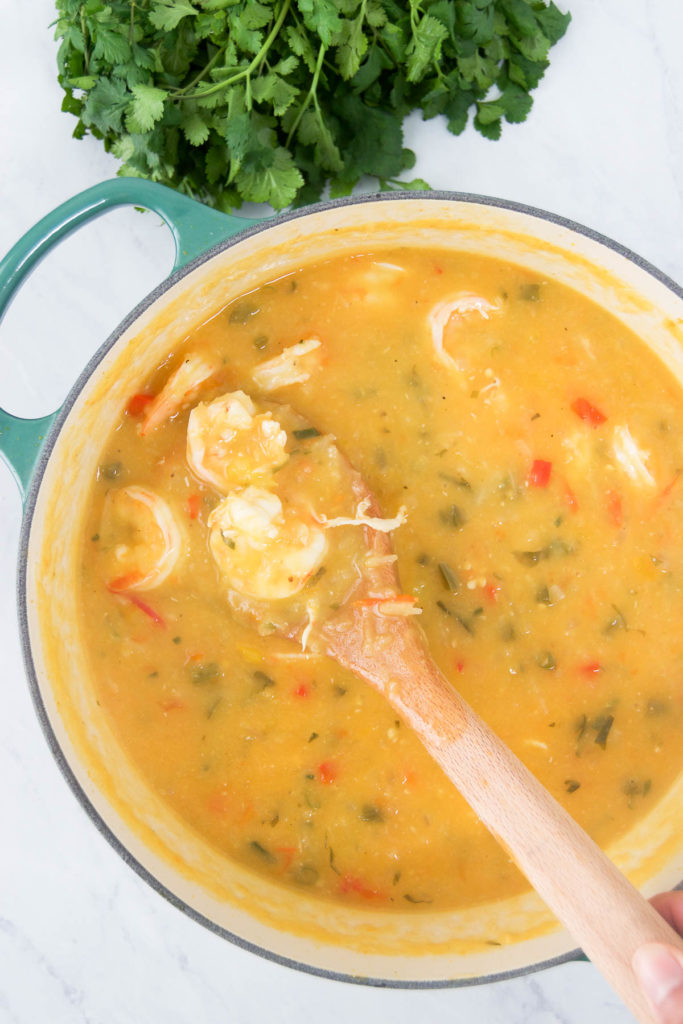
How to serve Bobo de Camarao
You can serve your Brazilian Shrimp Stew over white rice, sprinkle in some fresh herbs and splash some more heat with hot sauce if you’d like.
Some people also like to enjoy it with a farofa de dendê, which is basically this toasted cassava recipe, except completely different LOL. The difference is you heat up some dendê, saute brazilian sofrito, and toast the cassava flour in that for a minute or two—no bacon OR butter necessary.
If I’m feeling fancy, I buy some extra shrimp, keep the tails on ’em (and sometimes even leave the head on, too) and pan fry them to use as pretty garnish. Again, this isn’t necessary, but it sure looks impressive.

This is a wonderful family recipe that’s great for a weekend to share with the ones you love.
But if you have leftovers, you can also freeze it to enjoy later. Just don’t freeze it for too long.

Other Brazilian Classics to Try:
- Brazilian Collard Greens with Bacon Recipe
- Brazilian Black Beans Recipe
- Yuca Fries
- Mashed Yuca
- Pão de Queijo Recipe – Brazilian Cheese Bread
- Canjica
- Brazilian Tapioca
FOR MORE BRAZILIAN FOOD INSPO, BE SURE TO FOLLOW ME ON
Bobó de Camarão – Brazilian Shrimp Stew
Ingredients
- 1 large onion, diced a heaping cup
- 2 teaspoons of palm oil azeite de dendê
- 1 tablespoon Brazilian sofrito or 4 cloves of garlic, minced
- 1.3 pounds yuca root, peeled, shredded
- 2 pounds large shrimp, peeled and deveined pink, white, etc
- 3 tomatoes, cut into chunks
- 1/4 cup red bell pepper, diced
- 1/4 cup green bell pepper, diced
- 1/4 cup yellow bell pepper, diced
- 1-2 hot peppers Dedo de moça, red aji pepper, Serrano pepper
- 1 tablespoon grated ginger
- 1 14oz can of coconut milk
- 1 lime, juiced
- 1/4 cup green onion, sliced
- 1/4 cup cilantro, roughly chopped and more for garnish
- salt and pepper to taste
Instructions
- Heat the palm oil in a dutch oven over medium heat.
- Add the onion and saute until soft.
- Next, add the Brazilian sofrito, and saute until fragrant.
- Then, add the bell peppers, and saute until soft.
- Then, add the tomatoes and cook until soft.
- Add in the ginger and the chopped cilantro. Stir to combine.
- Add the shredded yuca, season with salt and pepper and stir to combine.
- Pour in the coconut milk, and 2 cups of water. Stir and simmer covered over low heat until the yuca is cooked, about 25 minutes, while stirring regularly.
- About halfway, add the chopped green onions and the chili peppers—if the mixture starts to get too thick, and starts to stick at the bottom of the pan, add another cup of water. (Please note that there will be some pieces of yuca that aren't completely soft and disintegrated, and that's normal.)
- When the yuca is mostly cooked, add the lime juice to the peeled and deveined shrimp, and stir to combine.
- After about 2 minutes, add the shrimp to the mixture. Cook another 10-15 minutes, until shrimp is just cooked and pink. (Cooking the shrimp for much longer will yield chewy, tough shrimp.)
- Serve over white rice and garnish with fresh cilantro.
Bom Apetite!!
Notes
- Yuca Root—there’s no substitute for this, as it is a main ingredient. It is fairly easy to find in grocery stores or in Latin markets.
- Palm Oil—this is known in Portuguese as Azeite de Dendê. In big cities, it can be found in healthy stores like Whole Foods, Central Market, etc. or in Brazilian markets, African markets, Latin markets, Asian markets or online, like this one. This ingredient offers beautiful color to the dish, but please be careful not to exceed the amount the recipe calls for, as too much of it can cause indigestion. If you really can’t find it, you may replace it with coconut oil, but please note, your dish will be more pale than what you see here…
- Shrimp—if you’re using frozen shrimp, please note that your thawed shrimp will weigh less… so purchase extra.
- Hot Peppers—in Brazil, we use pimenta dedo de moça, which you can substitute for red aji pepper. Both are nearly impossible to find where I live, so I use Serrano pepper.
- Coconut Milk—you want to use the kind from the can, like this one. Do not the one from the box.
Nutrition
More Black History Month Virtual Potluck 2022 Recipes!
- Fonio Bundt Cake with Hibiscus Glaze by A Classic Twist
- Collard Green Hand Pies by A Girl Called Adri
- Sweet Potato Wedges with Peanut Dipping Sauce by Big Delicious Life
- Sweet Potato Biscuits by Black Girls Who Brunch
- Chicken Plantains and Vegetables by Black Peoples Recipes
- Salmorejo (Stewed Crab) over Garlic Grits by Sense & Edibility®
- Mango Cake and Coconut Cream by Sims Home Kitchen
- Sous Vide Ox Tail with Coconut Rice by Sweet Tea + Thyme
- Yam Gnocchi served with Oxtail Peppersoup by The Food Disciple
- Brown Butter Brulé Bean Pie by The Queen of Yum
- Black Eyed Pea And Cornbread by The Vgn Way
- Click Here for the complete list of participants – there are over 30 recipes to choose from!


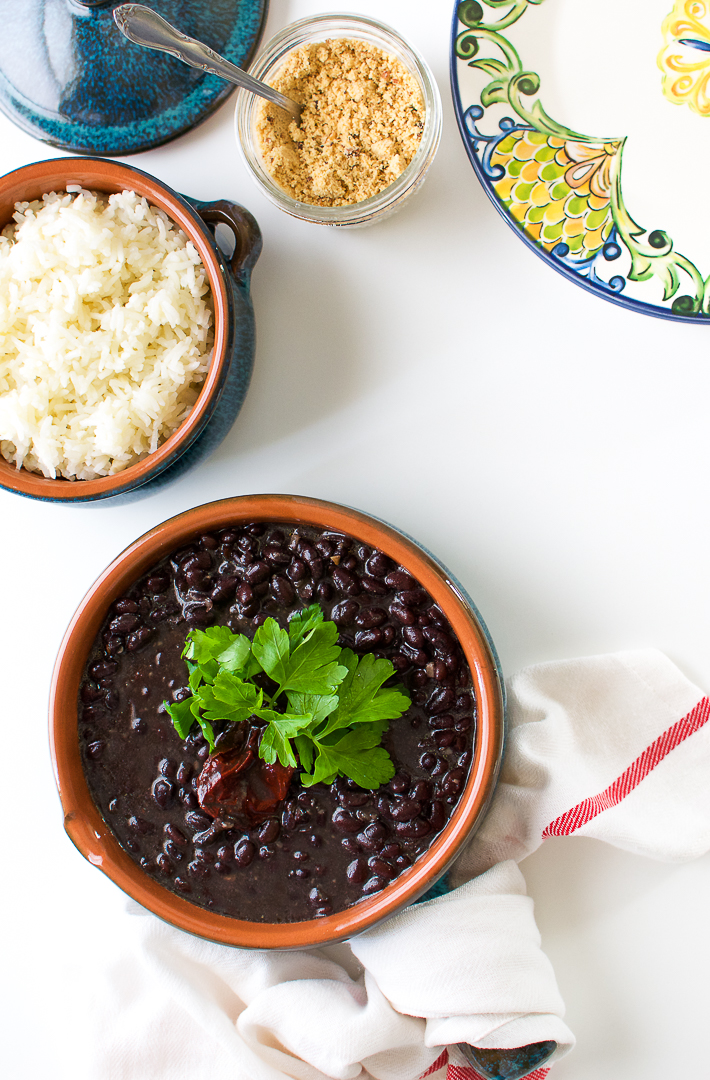
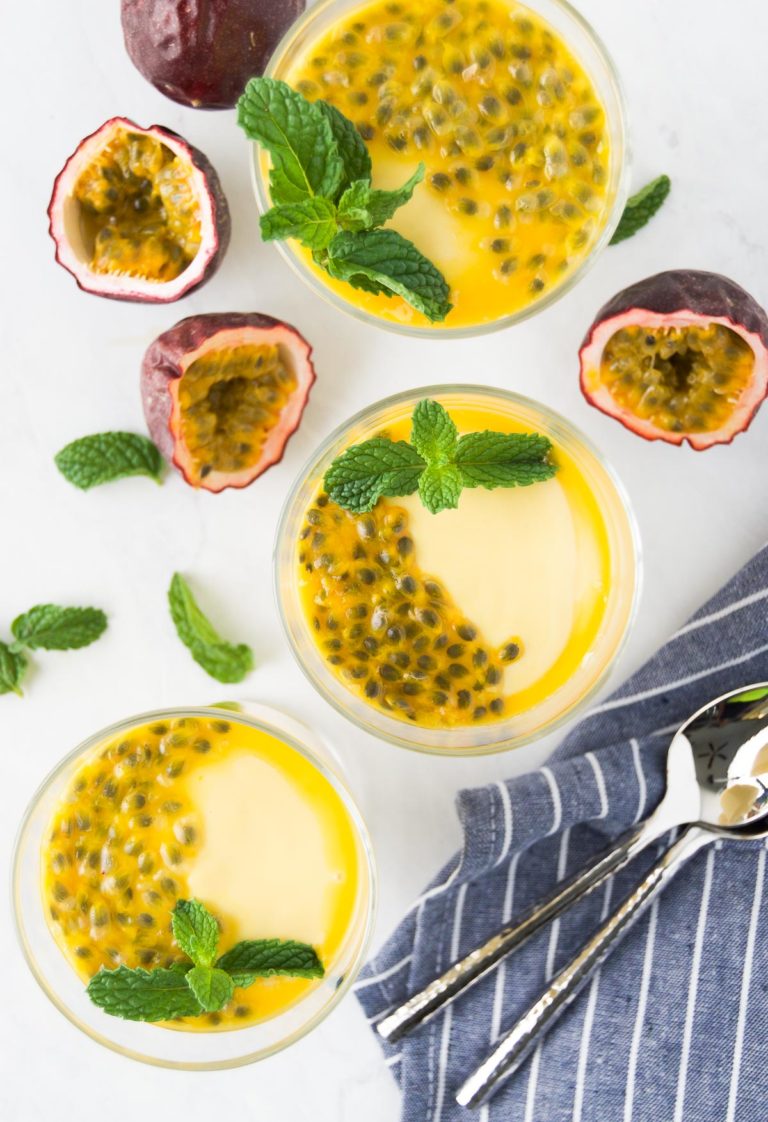
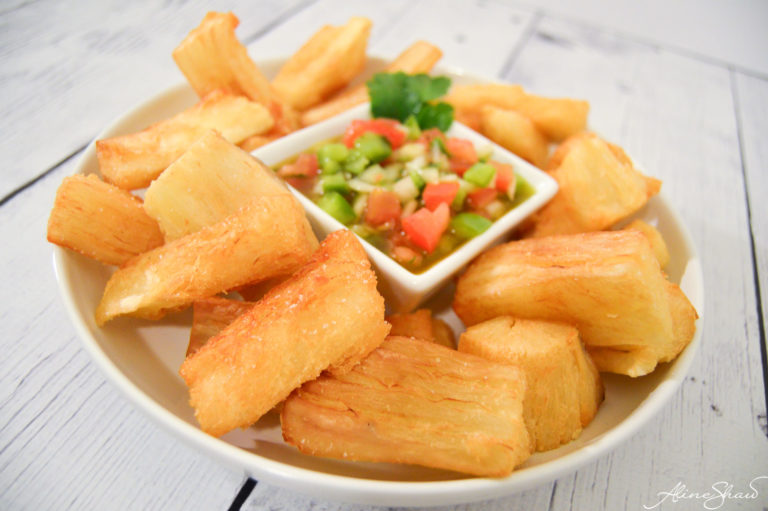

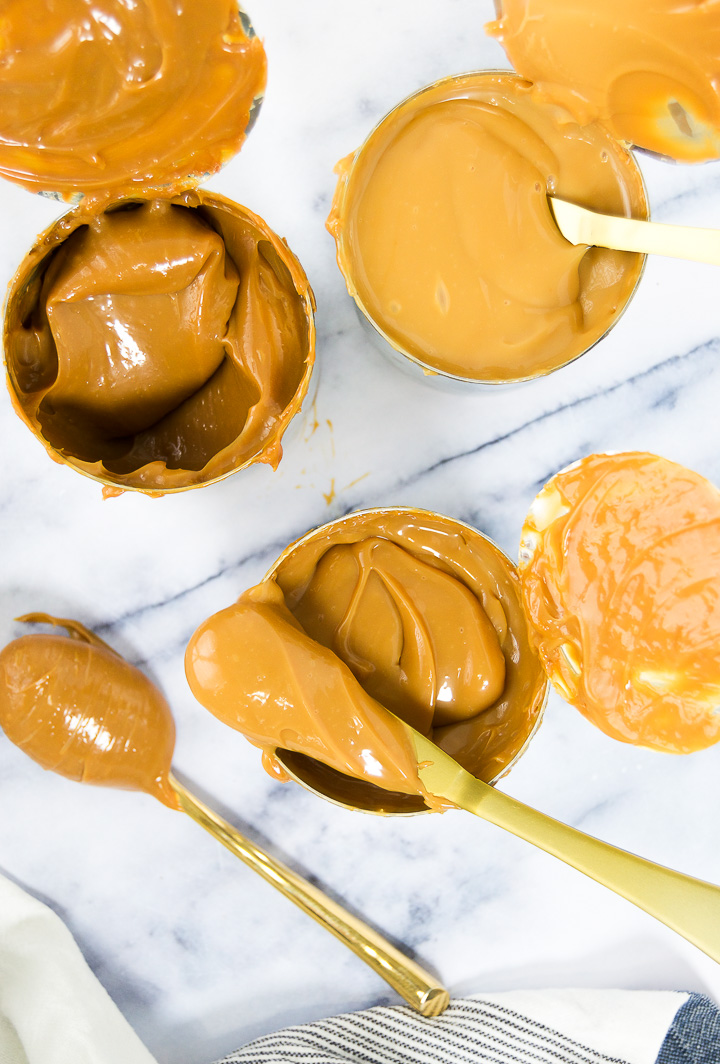
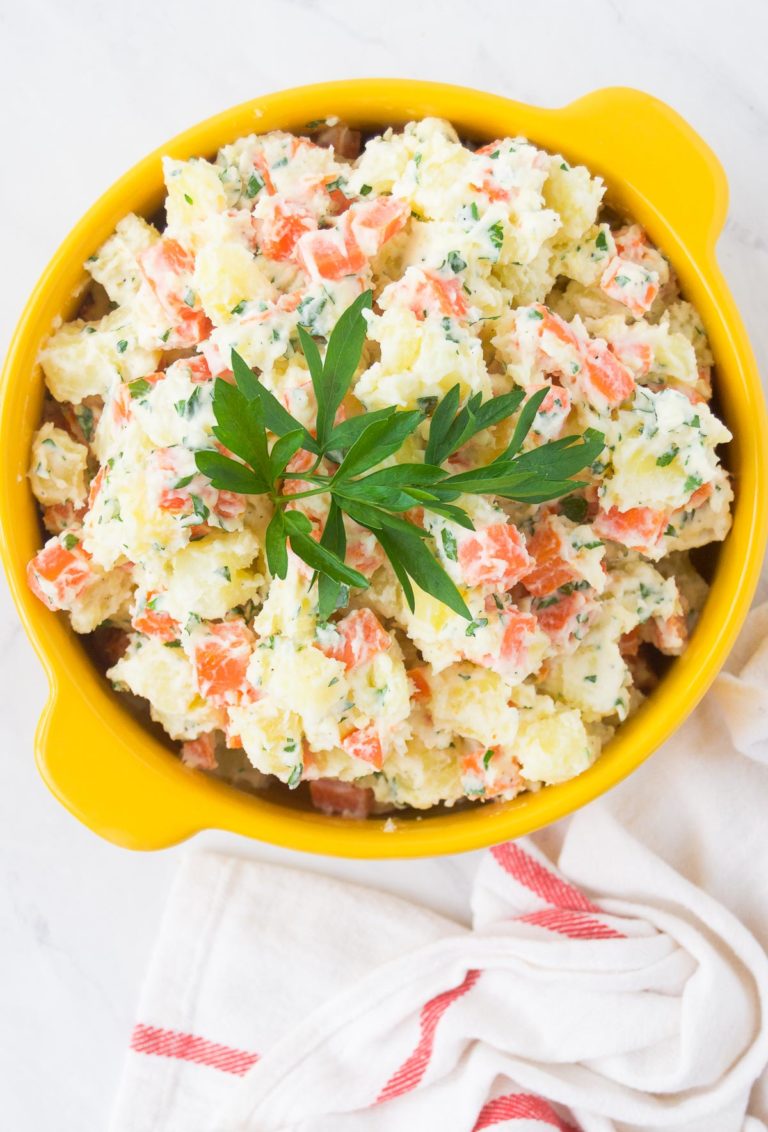
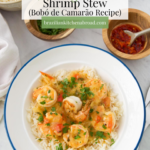
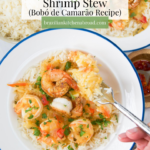
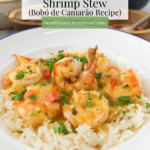
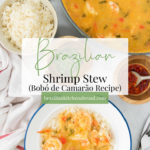
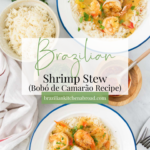
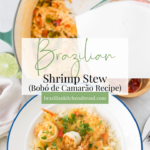
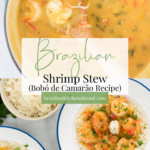
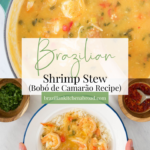
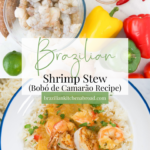

Amei essa receita , delicioso!
Que bom que gostou!!! <3
Thank youuuu for sharing this recipe! I’ve been craving Bobó for so long. This recipe is delicious!!! Loved it!
Yay!! So happy you already tried it and loved the recipe!! Thank you!
I found your recipe after a friend in Brazil sent me a photo of her preparation of it… knew I wanted to try it! My first time cooking and eating yuca. I was able to find the azeite de dende and pimenta malagueta online. The end result was a really great dish!! Easy to understand recipe… thanks for posting!
Awww this makes me so happy!! Thank you!
Thank you for an amazing recipe. My mom was from Recife and left there in 1958. She really only knew how to cook feijoada and farofa. The bobó was delicious and I want to read more of your recipes to learn some new dishes in this cuisine. Thank you again!
Thank YOU! So happy you enjoyed the recipe and even happier to have you be part of the community!! Happy cooking beijinhos xx
Amazing recipe, I loved it! Came out great, just like all of your other recipes!
YAY!!! So happy to hear!! Beijos xx
Absolutely incredible and SO flavorful! My entire family loved this, kids included. We’ll definitely make it again because these flavors are excellent!